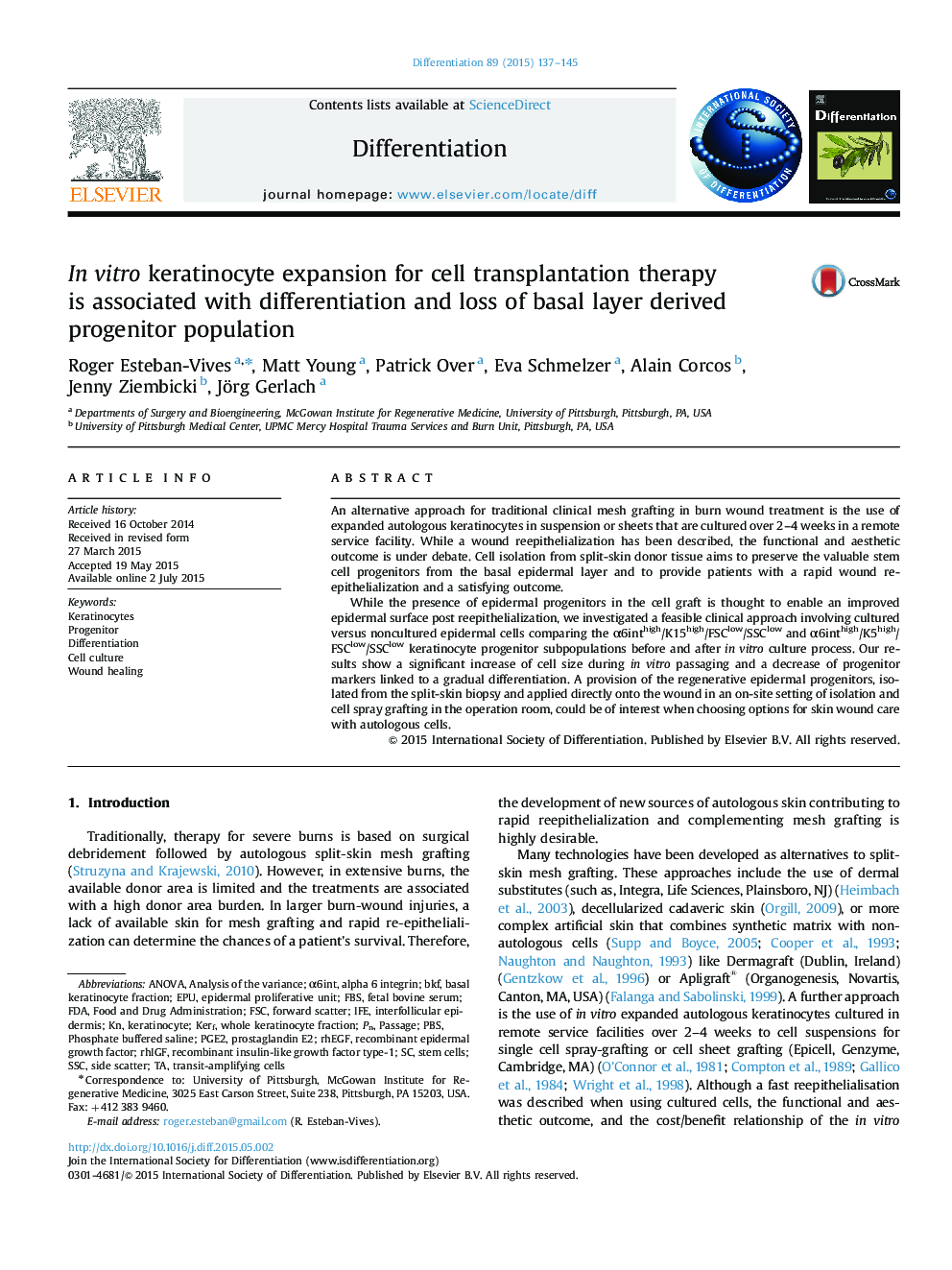| Article ID | Journal | Published Year | Pages | File Type |
|---|---|---|---|---|
| 2119341 | Differentiation | 2015 | 9 Pages |
•In vitro culture process has an impact on epidermal keratinocytes changing their gene expression and increasing the cell size.•The loss of basal layer keratinocyte subpopulations during in vitro culture process progressively reduces the keratinocyte proliferation activity.•Stem Cell antibody markers α6int, K5, and K15 may not be useful for cultured basal progenitor keratinocyte identification and additional cell size measurements in combination are suggested.
An alternative approach for traditional clinical mesh grafting in burn wound treatment is the use of expanded autologous keratinocytes in suspension or sheets that are cultured over 2–4 weeks in a remote service facility. While a wound reepithelialization has been described, the functional and aesthetic outcome is under debate. Cell isolation from split-skin donor tissue aims to preserve the valuable stem cell progenitors from the basal epidermal layer and to provide patients with a rapid wound reepithelialization and a satisfying outcome.While the presence of epidermal progenitors in the cell graft is thought to enable an improved epidermal surface post reepithelialization, we investigated a feasible clinical approach involving cultured versus noncultured epidermal cells comparing the α6inthigh/K15high/FSClow/SSClow and α6inthigh/K5high/FSClow/SSClow keratinocyte progenitor subpopulations before and after in vitro culture process. Our results show a significant increase of cell size during in vitro passaging and a decrease of progenitor markers linked to a gradual differentiation. A provision of the regenerative epidermal progenitors, isolated from the split-skin biopsy and applied directly onto the wound in an on-site setting of isolation and cell spray grafting in the operation room, could be of interest when choosing options for skin wound care with autologous cells.
